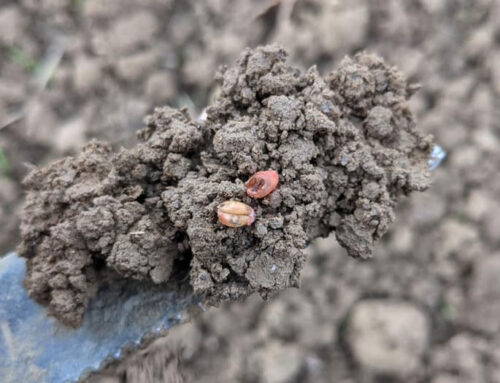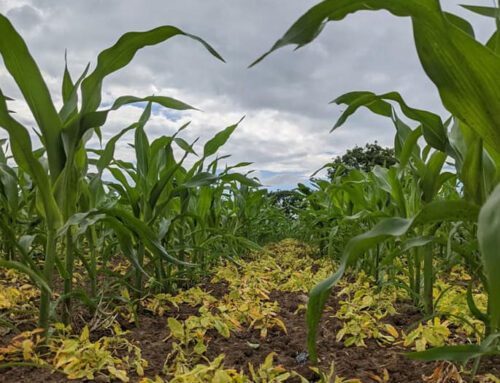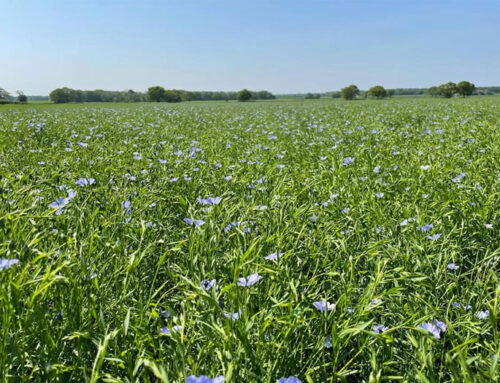April started off carrying on the trend from its predecessor March, wet and cold. This has caused the ever-growing backlog of spray jobs to swell even more, with spray plans ever changing from the originals prescribed 6 weeks ago I forget what version I’m on I’m pretty sure we’ve surpassed plan C a while ago. We have been awarded a week of dry sunny weather; this has reduced from the 10 days promised at the end of last week however I will take anything I can get at the moment. Hopefully, the rest bite will allow many of the sprayers to get caught up however in many situations land will need several days to dry up before the big, hefty sprayers can venture in. I fear a tidal wave of water could be racing ahead of the wheels in the tramlines only to retreat into some impressive wheelings.
Early sown winter wheats are fast approaching their first main T1 fungicide timing with leaf three either ¾ to fully emerged. Some of these early drilled crops could be excused for canary grass and managing their height will be testing. With most sulfonylurea grassweed herbicides now applied I usually count this as a start to my plant growth regulator (PGR) programmes, with a split of trinexapac and chlormequat added in with the T1. With yellow rust being halted by the cold March Septoria is the lingering beast which if persistent rain comes back could swiftly arise from hibernation. I have planned most of my T1 fungicides around the more Septoria active mefentrifluconazole and fluxaproxad actives while in relatively low risk varieties such as Extase a lower dose of the SDHI accompanied by metconazole will be by go to choice.
Winter barleys are going through the growth stages day by day with the earlier sown crops now displaying their flag leaves. Due to the unsettled weather and ground conditions many have only just received their T1 fungicides and a first PGR application. Where crops are large and final nitrogen applications completed as long as flag leaves are still tucked away a recommendation of mepiquat chloride will be prescribed. The rate of which will depend on the individual crops, and if anything, else is partnered with it.
Oilseed rape crops are now well into flower and survived the early April frosts relatively unscathed. As crops slowly burst into flower sclerotinia is our main target with Bixafen and prothioconazole my preferred actives, this spray will be applied when the crop is in full flower. If conditions stay dry during flowering, then a second spray may not be needed as petal stick onto the plants will be vastly reduced and with a significant change in commodity price to this time last year money must be spent wisely. Pigeons are still feasting on some crops and unfortunately, their desire to fatten up means there have been a few late calls on crop survival.
Late February drilled spring barleys are looking well and will soon be ready for a broad leaf weed tidy up, a low dash of prothioconazole and a good helping of manganese. These well tillered crops should now have received their full nitrogen complement while the later sown fields that are now all poking through can also be finished off.
Winter bean crops have recovered from the battering they took over winter and even those suffering a bentazone hangover are starting to display their first flower buds.
Winter linseeds have all had their early spring herbicide mixes to try and get on top of troublesome poppies and other sand land broad-leaved weeds. Plans will be left this week for another hit of PGR accompanied by a late spring fungicide.




